The Nutcracker is back this holiday season, and it's ditching racist caricatures
The Nutcracker is a huge operation for ballet companies. And it's only gotten more complicated during the pandemic.
The Pacific Northwest Ballet's production of the Christmastime ballet is live again this year, but it will be different. Audience members will have to mask up and show proof of vaccination to attend a show (or a recent negative test).
The cast is smaller, performers are rehearsing in masks, and those involved in the production are getting tested regularly — some every day.
There's another big change that has nothing to do with Covid: the character of the Chinese Tea dancer, which plays on racist stereotypes about Asian people, won’t be in this year’s production.
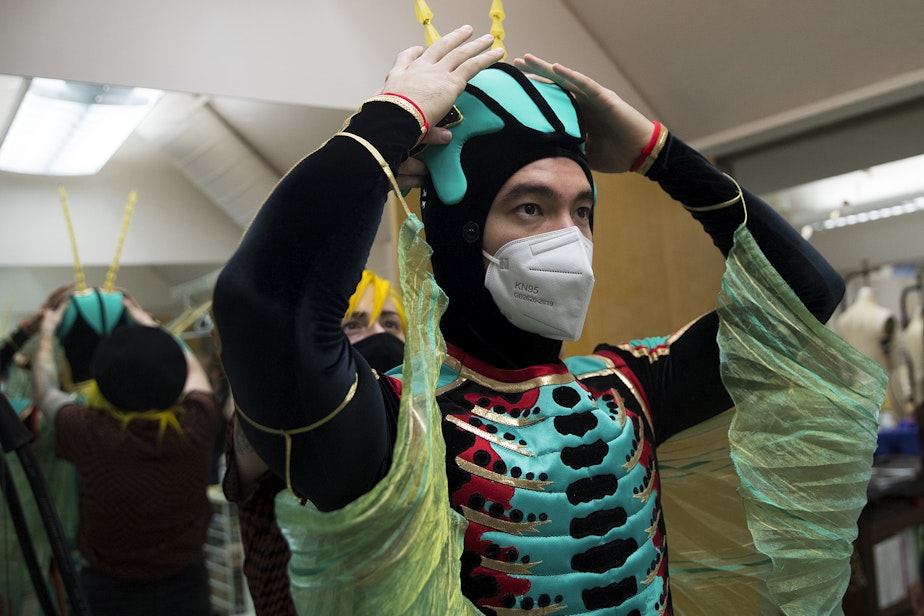
The version of the Nutcracker the Pacific Northwest Ballet has put on since 2016 was developed by choreographer George Balanchine in 1954. Peter Boal, artistic director for the Pacific Northwest Ballet, said there are some things in that version that don't align with the company's present-day values.
The Ballet made some changes to the Chinese Tea dancer character in its 2016 run, but as of this year, he’ll be gone altogether and replaced with a new one: The Cricket.
Boal worked with Phil Chan, the founder of Final Bow for Yellowface, as he was developing the character.
He chose a cricket for the role because they're revered in Chinese culture. They're often kept as pets, seen as good luck, and associated with music.
"All of that Balanchine choreography... jumps and splits and popping around the stage seems to fit a cricket perfectly," Boal said.
The cricket also gets a new costume, the first one added to the ballet since 2016. It's a dazzling green outfit with gold antennas and flowing green wings.

In a normal year, the Pacific Northwest Ballet's performance features about 230 people in a rotating cast. They're everyone from grade school students playing a chorus of angels to professional dancers doing a variety of challenging solos.
That doesn't include the full orchestra that accompanies every performance.
This year, the cast will be smaller to minimize Covid risk — just 193 — but the bustle is back in full force.
Last year, soloist Cecilia Iliesiu was able to put her feet up and pour a glass of wine to watch the pandemic replacement of the Nutcracker — a taped performance from a few years before.
"It was the first Nutcracker in my 12-year career that I wasn’t performing two shows every single day from the day after Thanksgiving until Christmas," Iliesiu told KUOW's Seattle Now podcast.
Iliesiu said she's grateful to be back on stage this year — and for every moment of chaos that entails.
"Last year was pretty sad without it... I guess [I had] a normal person’s holiday experience. And it was fine, but I missed it."
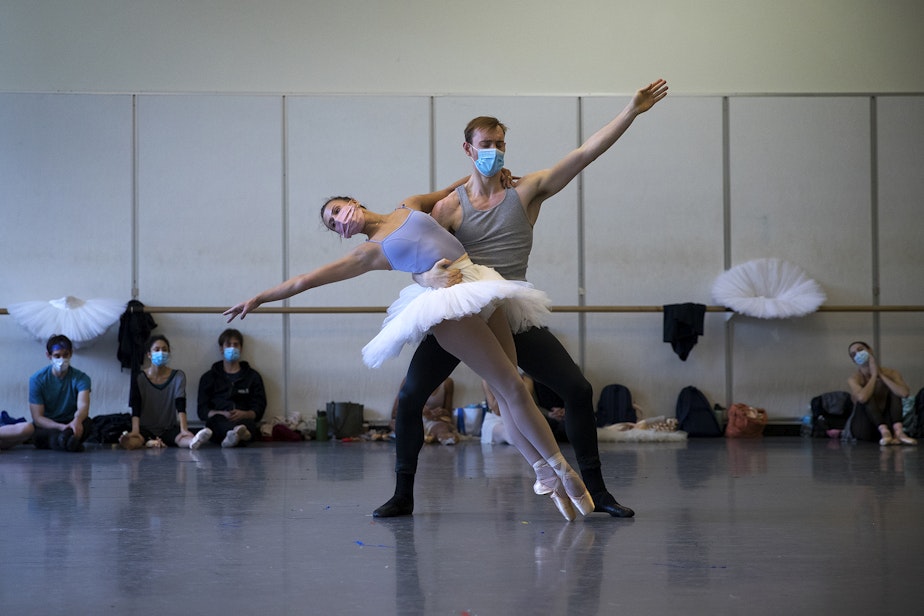
Sponsored
In the earlier days of the pandemic, the threat of losing live ballet performances was felt in earnest, Boal said.
Now, dancers are embracing The Nutcracker in a new way, post-lockdown, he said.
"We're different. We as people are different. So we want to celebrate the things that we love, and Nutcracker's obviously one of them."
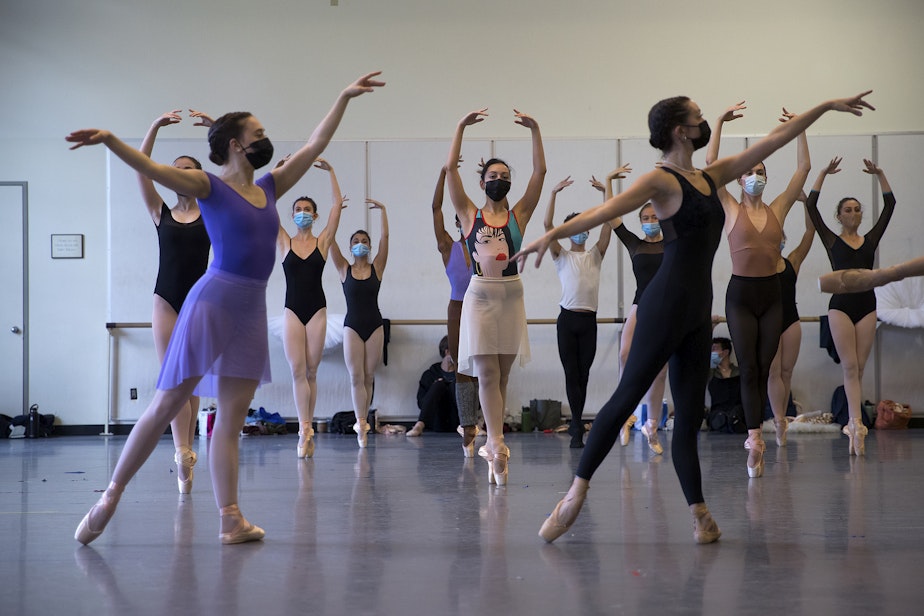
The pandemic will leave a mark on the stage as well, particularly for the Pacific Northwest Ballet's youth dancers.
They will have to wear masks during all their performances
DianaStarr Robinson is one of those dancers. She's eleven years old and is one of two dancers playing Clara, the show's protagonist.
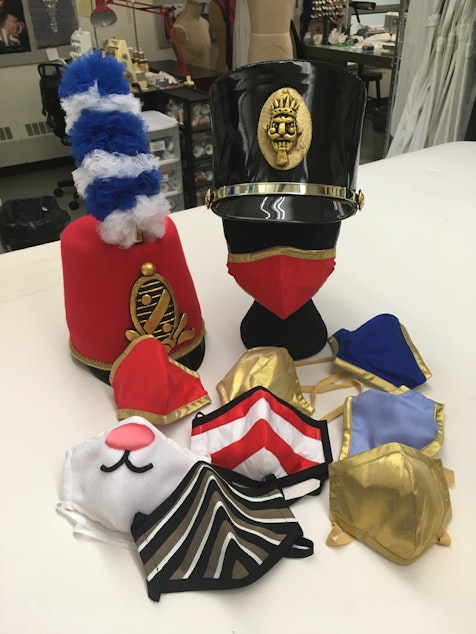
"Since Covid has started, I’ve not been used to dancing in a mask because of online classes, so it’s just very weird to me," Robinson said.
"Masks do sometimes hold back your breathing. And the masks do sometimes smell very weird. So it’s kind of hard to just breath in a mask while you're dancing."
Sponsored
The 100 youth dancers performing in the show this year will be wearing custom-made masks that match their costumes.
The mask Robinson will wear is red and white candy-cane stripes, to match Clara’s party dress.

Even more challenging than breathing through a mask may be acting through one. Boal told the young dancers it's important to smile even though no one can see their faces.
"I’ll know if you’re not smiling cause smiling happens in your eyes as much as it does in your mouth," he told them. "I’ll see your eyes and I will see that energy and that sparkle that comes when a genuine smile happens."
Sponsored
Some of the kids were worried about the realism of their performance — how do you eat a walnut or magical candy if you're wearing a mask?
"Pretend," Boal told them. "This is acting."
Despite the changes, the 2021 Nutcracker season marks a return to some semblance of normal for the Pacific Northwest Ballet, and for the audience members for whom the ballet is a holiday tradition.
"My favorite part of the Nutcracker happens off stage," Boal said. "It’s families that are in the lobby afterwards, and kids who are dancing up the aisle."
"I love [when] Sugar Plum Fairy will come out and you’ll hear — it’s mostly kids but it’s also adults — [go] 'ooooooh.'"
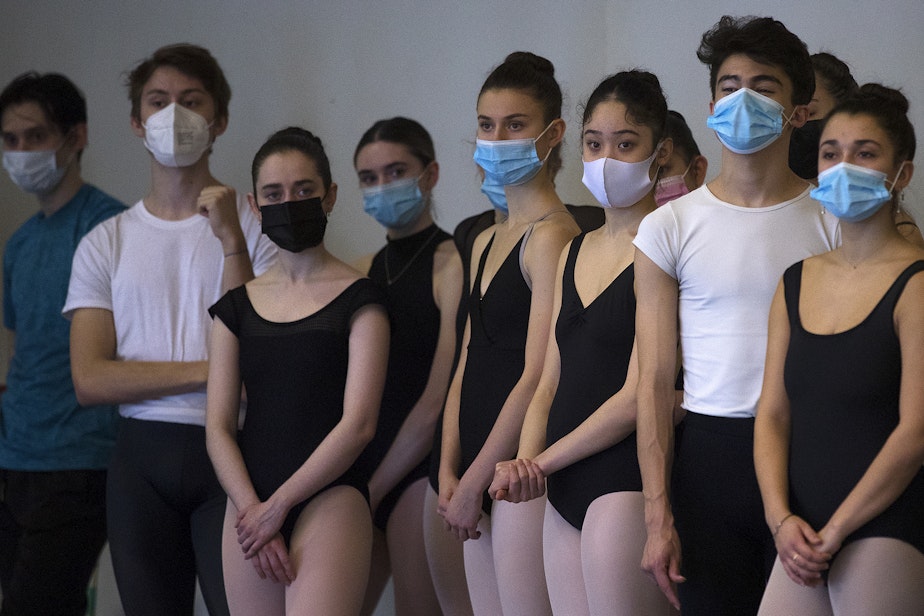
Robinson, the young dancer playing Clara, is thinking about the audience as well. The prospect of her first leading role on a big stage is nerve-wracking for her.
"There are over 100 people in that audience, and all the spotlight is on us. So it’s going to be crazy, just being there on that humongous stage."
Fortunately for her, the Pacific Northwest Ballet is limiting capacity so audience members can spread out.
Still, the number of people watching her performances could be as high as 2,200 — quite the spotlight for a young dancer in a candy-cane striped mask.
The Nutcracker is on now through December 28 at McCaw Hall.
This story was reported for KUOW's Seattle Now podcast. Click the play button at the top of the story to hear this episode, and subscribe to the show in any podcast app.





